Step-by-step: How to make kimchi at home
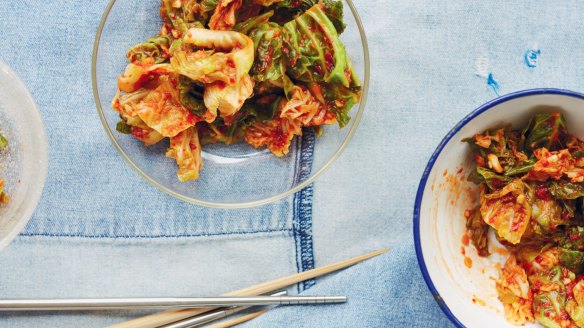
Here you'll see the simple and most reliable steps to making this fermented, spicy goodness.
EQUIPMENT: large bowl, knife, large plate, heavyweight 7.5 litre jar, small saucepan, whisk
INGREDIENTS: vegetables of your choosing (eg, cucumber, Chinese cabbage); salt; 100ml water; 25g rice flour; gochugaru (dried red pepper flakes), herbs, allliums (onion, garlic) and greens to taste
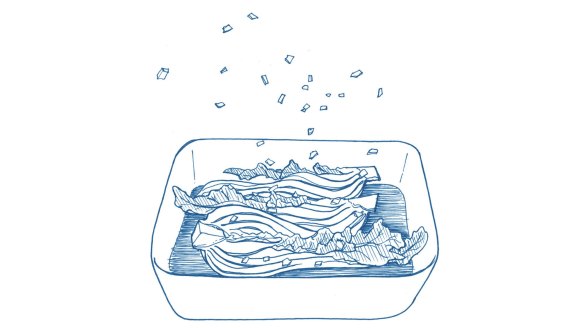
1 Salt your vegetables
Regardless of whether you use cucumbers or Chinese cabbage, make sure you prep your vegetables by salting them and letting them rest for at least 30 minutes and up to 6 hours (depending on the vegetable) to remove any excess water content. Squeeze to remove any excess water and rinse.
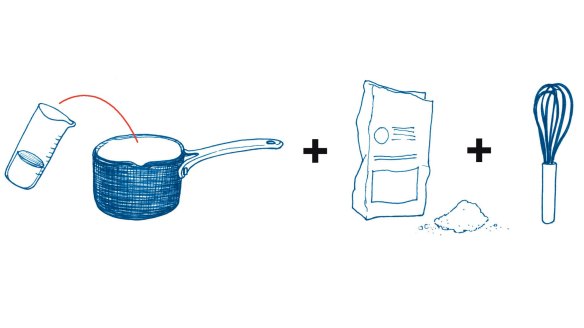
2 Make a rice flour paste
Create a paste by gently heating 100ml water with 25g rice flour in a saucepan, whisk to combine and then remove from the heat and leave to cool. Rice flour paste is used to help speed up the fermentation process and serves to feed the beneficial lactic bacteria.
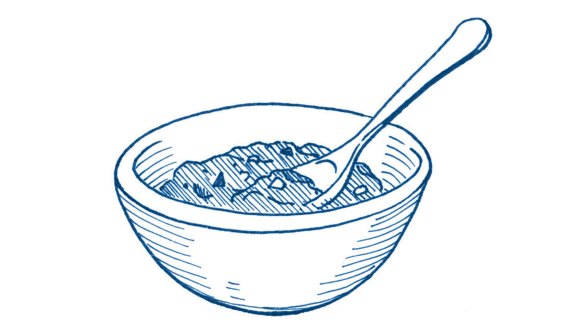
3 Add gochugaru and veg to paste
Add gochugaru (dried red pepper flakes) to the paste. You can also add various herbs, alliums or greens. You could even add different flavours to your paste and kimchi by adding anything from oysters to pears.
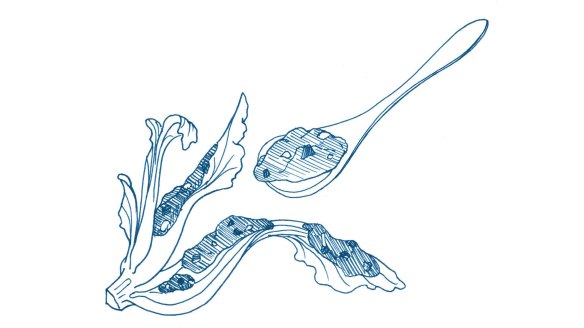
4 Relishing in layers
If using leafy vegetables like cabbage, make sure to layer any relish mixture and paste in between each vegetable leaf. Otherwise coat the vegetable really well with the relish and paste.
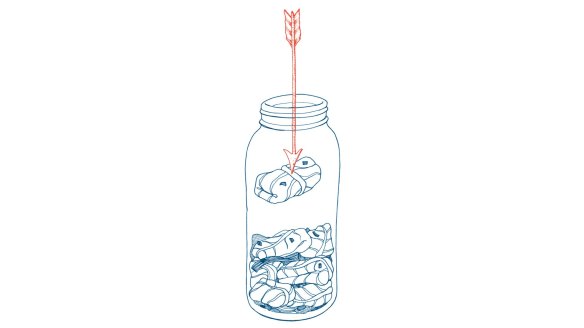
5 Pack it in
Make sure to fold cabbage leaves and pack vegetables well into a non-reactive container. Completely pack the vegetables into the jar and press down firmly. If possible, weigh the vegetables down, although this isn't always necessary.
6 Bubbles
Leave the kimchi out in a cool, dry place for 24 to 48 hours. You'll start to see the fermentation process in the bubbles that will begin to appear at the top of kimchi. This kimchi will keep for 4-8 weeks in the fridge. Extra fermented kimchi is perfect for using in stews and fried rice.
Preparation: 45 minutes; Inactive time: 6 hours fermentation (1-2 days)
Makes: 7.5 litres
SIX WAYS WITH KIMCHI
Fennel
Quarter and thinly slice 2 heads of fennel. Salt the fennel with 1 tablespoon coarse salt. Drain any liquid, rinse and squeeze out excess water. Combine 50g roughly chopped coriander with ½ a quantity of basic kimchi mix (see note below). Ferment for 1 day and then store in the fridge in an airtight container.
Mustard greens
Toss 1 tablespoon fish sauce with 2 bunches of roughly chopped mustard greens (about 300g). Leave to stand at room temperature for 30 minutes or until the mustard leaves are fairly wilted. Combine 50g parsley stems with ½ a quantity of basic kimchi mix (see note below), about 60ml, in a medium bowl. Mix well. Serve right away – this dish doesn't need to be fermented. Store in an airtight container in the fridge.
Brussels sprouts
Slice 400g Brussels sprouts thinly on a mandoline and toss with ½ tablespoon coarse salt. Leave to stand at room temperature for 45 minutes. Drain any liquid, rinse and squeeze out excess water. Mix 2 teaspoons crushed garlic, 2 chopped spring onions, 2 tablespoons gochugaru (red pepper flakes), 2 tablespoons chilli garlic sauce (such as sambal oelek), 2 tablespoons fish sauce and 2 teaspoons granulated sugar in a medium bowl. Add the sliced sprouts to the mixture and mix until well coated. Serve right away – this dish doesn't need to be fermented. Store in an airtight container in the fridge.
Cauliflower
Slice 1 head of cauliflower (about 675g) into 2cm slices. Toss 2 tablespoons coarse salt with the cauliflower. Leave to stand at room temperature for 45 minutes. Drain any liquid, rinse and squeeze out excess water. Mix with 1 quantity of basic kimchi mix (see note below), and 2 spring onions cut into long pieces. Ferment for 1–2 days at room temperature, then store in the fridge in an airtight container.
Bok choy
Halve 6 heads of bok choy (about 250g) and salt with 1 teaspoon coarse salt. Leave to stand at room temperature for 45 minutes. Drain any liquid, rinse and squeeze out excess water. Mix 3 tablespoons chopped garlic chives or regular chives with ½ a quantity of basic kimchi mix (see note below) in a small bowl. Spread the chive mixture in between each bok choy leaf and pack them tightly in an airtight container. Ferment for 1 day and then store in the fridge.
Kohlrabi
Chop and peel 2 heads of kohlrabi into 3cm pieces. Toss kohlrabi with 1 tablespoon coarse salt and 1 tablespoon granulated sugar; leave to stand at room temperature for 45 minutes. Drain any liquid, rinse and squeeze out excess water. Chiffonade 2 mustard green leaves and mix with kohlrabi along with half a quantity of basic kimchi mix (see note below). Ferment for 2–3 days at room temperature. Store in the fridge in an airtight container.
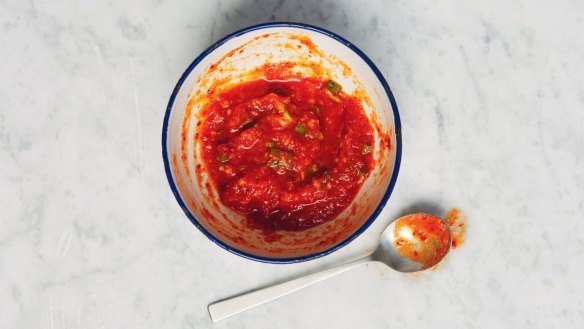
Basic kimchi mix
Ingredients
1 small red capsicum, destemmed and pureed with ribs and seeds
½ Fuji apple or Asian pear, peeled and pureed
1 tbsp salted, fermented shrimp (or fish sauce)
2 tbsp crushed garlic
1½ tbsp grated ginger
6 spring onions, finely chopped
30g gochugaru (dried red pepper flakes)
25g sweet rice flour
1 tbsp fish sauce
1 tsp granulated sugar
Method
Bring 100ml water to a simmer in a saucepan and slowly whisk in the flour. Remove the pan from the heat and leave to cool. Add the remaining ingredients and mix well until combined. Use straight away or, if you have time, place in the fridge for an hour or longer. This will keep for two weeks in the fridge.
This is an edited extract from Korean Food Made Easy by Caroline Hwang, Murdoch Books, $39.99. Photography by Lisa Linder, Illustrations by Alice Chadwick.
Appears in these collections
The best recipes from Australia's leading chefs straight to your inbox.
Sign up